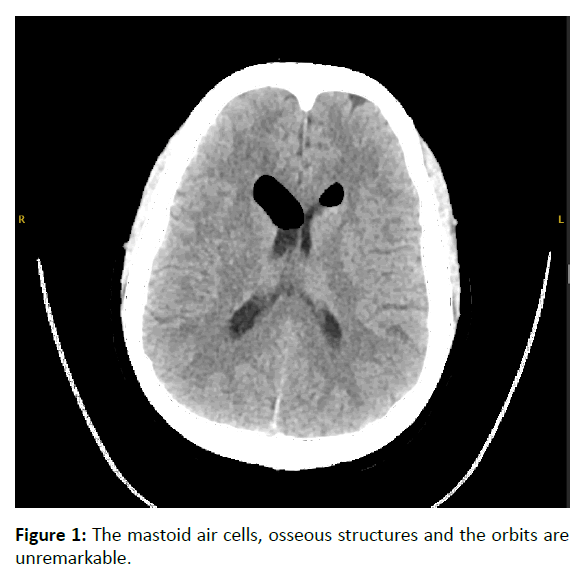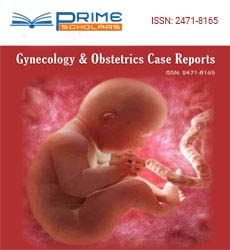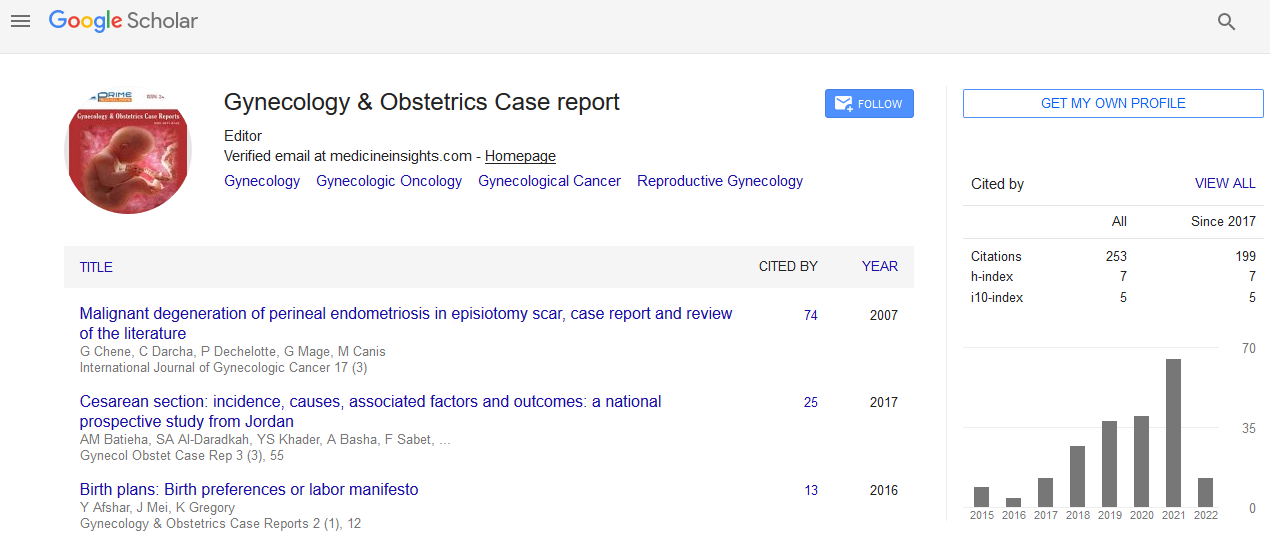Case Report - (2025) Volume 11, Issue 2
Pneumocephalus after Epidural Anesthesia for Labor: A Case Report
Shahad Aljebeli1*,
Shahad Alobikan1 and
Nasser Tawfeeq2
1College of Medicine, King Saud bin Abdulaziz University for Health Sciences, National Guard Health Affairs, Riyadh, Saudi Arabia
2Department of Anesthesia, King Abdulaziz Medical City, National Guard Health Affairs, Riyadh, Kingdom of Saudi Arabia
*Correspondence:
Shahad Aljebeli, College of Medicine, King Saud bin Abdulaziz University for Health Sciences, National Guard Health Affairs,
Saudi Arabia,
Tel: + 0556955765,
Email:
Received: 22-Jan-2025, Manuscript No. ipgocr-25-22417;
Editor assigned: 24-Jan-2025, Pre QC No. ipgocr-25-22417 (PQ);
Reviewed: 03-Feb-2025, QC No. ipgocr-25-22417 (Q);
Revised: 10-Feb-2025, Manuscript No. ipgocr-25-22417 (R);
Published:
17-Feb-2025, DOI: 10.36648/2471-8165.11.2.11
Abstract
Background: Epidural anesthesia is a wildly used technique and is considered safe. Although there are some potential side effects and complications. Pneumocephalus, defined as the collection of air in the cranial cavity, is a rare but a benign condition. We hereby report a case of pneumocephalus in a primigravida after epidural anesthesia during labor.
Case description: A 28 years old female medically and surgically free, primigravida at 41 weeks of gestation was admitted for induction of labor. On day three postpartum, the patient presented to the emergency department with insomnia, palpitation, tachypnea proceeded with sudden left sided weakness and numbness. An urgent neurological consultation was requested and a CT brain and CT venogram were ordered. Which revealed pneumocephalus.
Conclusion: Pneumocephalus is an uncommon complication related to epidural anesthesia, recognizing its potential occurrence and applying appropriate diagnostic and treatment strategies can lead to favorable results, as evidenced in this case.
Keywords
Epidural anesthesia; Labor; Pneumocephalus; Postpartum; Complication
Introduction
An unusual neurological presentation of a newly delivered mother can lead to a wide range of differential diagnosis that will health provider at a dilemma. Pneumocephalus, defined as the collection of air in the cranial cavity, is a rare but a benign condition. Although rare, recognizing its potential occurrence and applying appropriate diagnostic and treatment strategies is vital. On the other hand, tension pneumocephalus can be a life-threatening condition which requires immediate intervention. Although pneumocephalus is extremely rare, traumatic head injuries are considered the most common causative factor. Pneumocephalus can be caused by a variety of reasons including traumatic brain injuries, craniofacial trauma, neurosurgical procedures, anesthesia, infections involving the brain or middle ear, or positive pressure ventilation [1]. We hereby report a case of pneumocephalus in a primigravida after epidural anesthesia during labor.
Epidural anesthesia is a common procedure that is done during labor for pain relief and eases the process of labor. It is a wildly used technique and is considered safe. Although there are some potential side effects and complications. During epidural injections, a loss of resistance technique can be used to identify the epidural space, which allows the air to enter the meninges [2]. The clinical features of pneumocephalus can range from headaches, nausea, vomiting, altered mental status, tinnitus, and seizures. Despite the lack of definitive guidelines, evidence suggests that hyperbaric oxygen treatment may lead to quicker resolution of symptoms. It is important that healthcare providers including obstetricians and anesthesiologist can diagnose this condition promptly and involve other teams when necessary.
Case Description
A 28 years old female medically and surgically free, primigravida at 41 weeks of gestation was admitted for induction of labor by propess, a pessary that contains dinoprostone, due to postdate and decreased fetal movement. During labor the patient requested epidural for pain relief. The procedure was done by the anesthesiologist under aseptic technique, during the initial attempt at epidural insertion, blood was noted. On the second attempt, Cerebrospinal Fluid (CSF) was observed leaking. The third attempt was successful. Loss of resistance was achieved at 5 cm at L2-L3 level and the catheter was placed at 9cm. There was negative aspiration and bolus was 8ml of 0.1% ropivacaine was given and infusion was started 10ml/hr. Following the epidural insertion, patient developed maternal tachycardia (reaching 140) and low-grade fever (37.6). The patient was started on acetaminophen, ampicillin and septic workup was ordered. The patient delivered a healthy baby with Postpartum Hemorrhage (PPH) due to second degree tear with estimated blood loss of 500 mL. The following day the patient was discharged as the genital, blood, urine cultures were negative, and she was clinically and vitally stable.
On day three postpartum, the patient presented to the emergency department with insomnia, palpitation, tachypnea proceeded with sudden left sided weakness and numbness. Negative history of fever, loss of consciousness, seizures, altered level of consciousness, slurred speech, and change in vision. NIHSS: 0. Upon examination the patient was conscious, alert and oriented to time, person, and place, obeys simple and complex command, fluent comprehensive speech, no gaze preference, ptosis or Nystagmus, intact extraocular movement with bilateral reactive pupil, intact facial sensation, preserved forehead wrinkles and no facial asymmetry. Centrally located uvula with symmetrical platine elevation, no tongue deviation atrophy or abnormal movement with good neck power and full power over al limbs 5/5 in all range of motions, preserved reflexes +2 and normal tone, Bilateral down going planter reflexes. Intact fine touch, pain and proprioceptive sensation all over including upper and lower limbs. No dysmetria, limb or truncal ataxia, Adequate arm swinging and normal gait with negative tandem gait. An urgent neurological consultation was requested and a CT brain and CT venogram were ordered.
Brain CT showed: There is multifocal air foci noted within the anterior horns of the lateral ventricles and cavernous sinus. There is concomitant air foci noted within the quadrigeminal cistern adjacent to the origin of the bilateral basal vein of Rosenthal, likely located within the deep venous system. No hydrocephalus. No acute territorial infarction or intracranial hemorrhage. No mass effect, midline shift or brain herniation. There is mild pacification of the paranasal sinuses. The mastoid air cells, osseous structures and the orbits are unremarkable Figure 1. CT venogram showed: The internal jugular, sigmoid, transverse, straight, Vein of Galen, internal cerebral veins, superior and inferior sagittal sinuses are patent. Hypoplastic left internal jugular, transverse and sigmoid sinuses are noted. And the final impression was Intraventricular, cavernous sinus and quadrigeminal cistern pneumocephalus. With no acute territorial infarction or intracranial hemorrhage or cerebral venous thrombosis.

Figure 1: The mastoid air cells, osseous structures and the orbits are unremarkable.
Discussion
Pneumocephalus refers to the occurrence of air in the intracranial cavity [1]. Various theories account for its formation, mainly through two processes. The first involves the inverted soda bottle phenomenon, in which a reduction in Cerebrospinal Fluid (CSF) volume causes air to enter [3, 4]. The second is the ball valve mechanism, in which extracranial positive pressure overpowers intracranial pressure, allowing air to enter the cranial cavity [1, 3]. Pneumocephalus can be asymptomatic or present with symptoms of increased intracranial pressure [4]. Common manifestations include nausea, vomiting, altered mental status, and positional headaches that worsen when sitting [1, 3, 4]. Additional symptoms may involve nuchal rigidity, photophobia, and visual disturbances [1, 3].
Computed Tomography (CT) is the preferred imaging method for diagnosing pneumocephalus due to its excellent sensitivity and specificity [1]. CT can identify as little as 0.55 ml of air in the cranial cavity, greatly surpassing the capabilities of skull x-rays, which need at least 2 ml to detect air [4]. Radiologists search for particular indicators that suggest the presence of pneumocephalus, such as the Mount Fuji sign, the air bubble sign, and the peaking sign [5]. In the case described, the air bubble sign was noted in the anterior horn of the lateral ventricle. The management of pneumocephalus varies based on its severity. Generally, uncomplicated cases, regardless of their size, can often be treated conservatively, as the air usually dissipates within a few days [1, 5]. For a simple pneumocephalus, conservative treatment methods are attempted, which include maintaining a supine position, using hyperbaric oxygen therapy, and administering antiemetics and analgesics [1, 4, 5]. On the other hand, tension pneumocephalus, which is a more serious variant, is considered as a medical emergency that requires immediate surgical intervention [3]. In this reported case, the patient received 100% oxygen therapy delivered through a non-rebreather mask for duration of 48 hours, leading to a total resolution of symptoms and a full recovery within just a few days after beginning treatment.
Conclusion
This case report details a rare incident of pneumocephalus that followed epidural anesthesia during labor. The patient's onset of neurological symptoms three days postpartum, despite an initially smooth discharge, highlights the necessity for careful monitoring post-procedure and educating patients about potential late complications. Moreover, this case conforms the effectiveness of CT imaging in identifying pneumocephalus, as well as the critical role of ruling out cerebral venous thrombosis via CT venography, a key differential diagnosis for postpartum patients to neurological complications. To conclude, pneumocephalus is an uncommon complication related to epidural anesthesia, recognizing its potential occurrence and applying appropriate diagnostic and treatment strategies can lead to favorable results, as evidenced in this case.
References
- Wankhade BS, Beniamein MMK, Alrais ZF, Mathew JI, Alrais GZ, et al. (2022) What should an intensivist know about pneumocephalus and tension pneumocephalus?. Acute Crit Care 38(2): 244.
Google Scholar, Cross Ref, Indexed at
- Sweni S, Senthilkumaran S, Balamurugan N, Thirumalaikolundusubramanian P (2013). Tension pneumocephalus: A case report with review of literature. Emerg Radiol 20: 573-578.
Google Scholar, Cross Ref, Indexed at
- Ahmad M, Bellamy S, Ott W, Mekhail R (2023). Pneumocephalus secondary to epidural analgesia: A case report. J Med Case Rep 17(1): 217.
Google Scholar, Cross Ref, Indexed at
- Wu X, Cao X, Zhang M, Wang Q, Han J, et al. (2023). Post-dural puncture headache combined with pneumocephalus secondary to vaginal delivery following epidural anesthesia: A case report. BMC Pregnancy Childbirth 23(1): 548.
Google Scholar, Cross Ref, Indexed at
- Hegazy Y, Balassiano NN, Gupta I, Stern R, Ghallab, M (2024). Pneumocephalus after Lumbar Epidural Steroid Injection: A Rare Complication With Spontaneous Resolution. Cureus 16: e73268.
Google Scholar, Cross Ref, Indexed at
Citation: Aljebeli S, Alobikan S and Tawfeeq N. (2025) Pneumocephalus after Epidural Anesthesia for Labor: A Case Report. Gynecol Obstet Case Rep. Vol.11 No.2:11.
Copyright: © Aljebeli S, et al. This is an open-access article distributed under the terms of the Creative Commons Attribution License, which permits unrestricted use, distribution and reproduction in any medium, provided the original author and source are credited.


